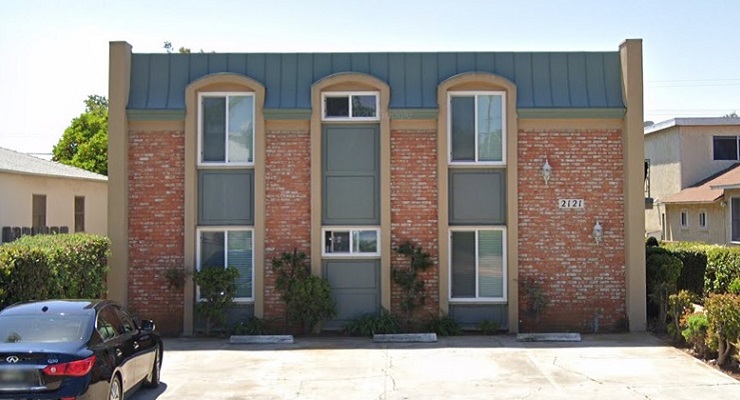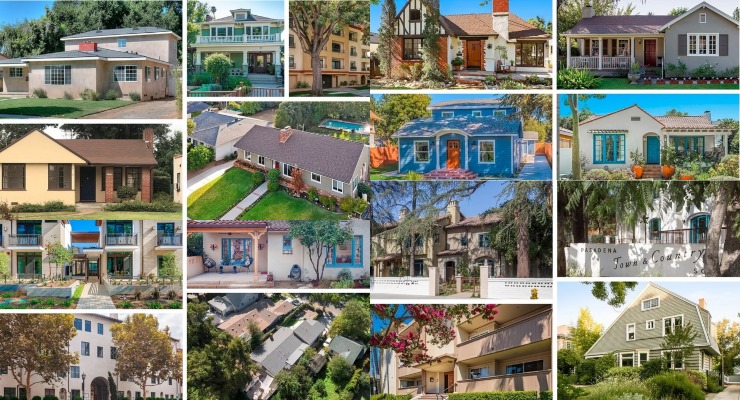
Rob Levy, area manager for HomeBridge Financial; some of those low interest rates; and Coldwell Banker Realtor Adam Bray-Ali
One curious and ironic effect of the pandemic is that while everyone is spending more time at home, they are beginning to look for larger pastures. At the same time, interest rates have been at a “once-in-a-lifetime low” for months, according to Rob Levy, area manager for HomeBridge Financial.
“As long as there’s a shortage of supply and a big demand and rates are low, we’re going to have this market,” said Levy in a recent interview.
According to Freddie Mac, interest rates are the lowest they’ve been in an entire generation. As a bit of comparison, on Friday, October 16, 1981 interest rates were at an all time high of 18.53%. Since then, 30-year fixed rate mortgage interest rates have nosedived. In a good way.
“It only takes a half a point decrease in interest rates to shake up the industry and get brokers, realtors and people excited about buying and selling, and in the past year, we’ve seen a full 1 point decrease,” says Coldwell Banker Realtor Adam Bray-Ali.
Interest rates are also increasingly important because, as DQNews recently reported, median home sales prices in the region rose by 10.1 percent, from December 2019 to $600,000 in December 2020, with sales rising by 29 percent over 2019.
Adding to the busy landscape, closed escrow sales of existing, single-family detached homes in California totaled a seasonally adjusted annualized rate of 509,750 units in December, according to information from more than 90 local REALTOR® associations and MLSs statewide.
The statewide annualized sales figure represents what would be the total number of homes sold during 2020 if sales maintained the December pace throughout the year. It is adjusted to account for seasonal factors that typically influence home sales.
And what does that mean in plain English, Rob?
“The Feds are looking at the overall picture of the market and, trying to maintain some stability in the midst of the pandemic,” explained Levy, who also owns the historic Raymond 1886 restaurant in South Pasadena.
“Knowing the potential for a recession, they’re trying to keep things moving in a positive direction,” he added.
Levy sees the current rates, which have held steady for at least a few months, remaining in the same place for the early part of the year, and should there be any rise, it likely won’t be dramatic.
Much of the reason for the stability is that the San Gabriel Valley, particularly Pasadena and San Marino, is a “unique market,” explained Levy.
“There is very limited inventory,” he said, “and a lot of people want to live here. So as long as there’s a shortage of supply and a big demand and rates are low, we’re going to have this market. And nobody really knows when that will change.
While the current “extraordinarily low rates” are fairly recent in the last year, Levy acknowledges that the area has had historically low rates for the last several years. But the current numbers could end up being seriously historic.
“Back in the eighties,” said Levy, “rates were up in the 15, 18, 20% range. So, when you consider that these are truly lifetime low rates, it’s a spectacular opportunity. Adding to the current opportunity, says Levy, is that “even people that got a loan a year ago have an opportunity to refinance at a rate that’s maybe 1% below what they got even a year ago.”
Not to pound the nail too hard, but how significant is the last rate drop?
“So on January 2nd, 2020, interest rates were 3.72, and on January 28th, 2021, they were 2.73,” explained realtor Bray-Ali. “That’s a full 1% lower. Now what that does over that one year period, is that every mortgage broker in town is calling their clients and saying, ‘It makes sense to refinance.”
According to Bray-Ali, for people who are looking to buy, a 1% decrease in interest rates is a very big move. It makes homes more affordable on a monthly basis, which pushes demand even higher.
“If you say ‘I’m going to be borrowing $500,000, how much is it going to cost me per month?’ With a 1% lower rate, it is a big difference. $5,000 per year, more than $400 per month” Bray-Ali continued.
While the mortgage opportunities abound, there is a darker side, however.
A number of buyers have also been caught in the COVID squeeze with job losses and the subsequent damage to their income and credit rating, as they made “forbearance” arrangements to extend payment schedules.
As Levy responded, “That’s the impact of COVID that we’re beginning to see and, I’m sure we’ll see more of it. I think also, there was a huge number of people that went into forbearance to delay their payments and not understand how that would impact them coming out the other end.”
Those mortgage holders may now be unable to refinance or apply for new loans, said Levy.
“The fact that they had been in forbearance alone would pretty much exclude them from the opportunity to refinance or get a new loan. Investors have been exceedingly flexible with this as long as they are no longer in forbearance. And there have not been late payments. They’re allowing people to get into new loans, at least some are. But it is a problem.”
Levy continued, “The people who have tenants who are not paying the rent, but they still have to continue making the payments to the bank and you know, it doesn’t matter how much you earn. There’s a point where you just can’t manage it. So it’s a problem.”
Looking at the big picture, Levy noted that the mortgage and financial landscape affects everyone.
“It impacts everybody,” he explained. “The servicers for the loans and the government who ultimately buys, conforming loans, or the investors who ultimately own the larger jumbo or non-conforming loans. There’s nobody this doesn’t impact. So we’re all in it together.”
But given every side of the finance picture, Levy is quick to acknowledge that these are still historic times, and those who are able to take advantage of the low rates should act accordingly.
“I think more than anything,” said Levy, “don’t wait. If you’re thinking about buying or refinancing, don’t wait because if rates go up half a percent or 1%, the house you were looking at costs you more, because the interest rate is higher.
“And with refinancing,” he continued, “don’t wait for it to go down because we don’t know if it will. And when rates are this low, it’s more likely that they’ll go up than down. I mean, we never thought we would get here, but here we are.”






